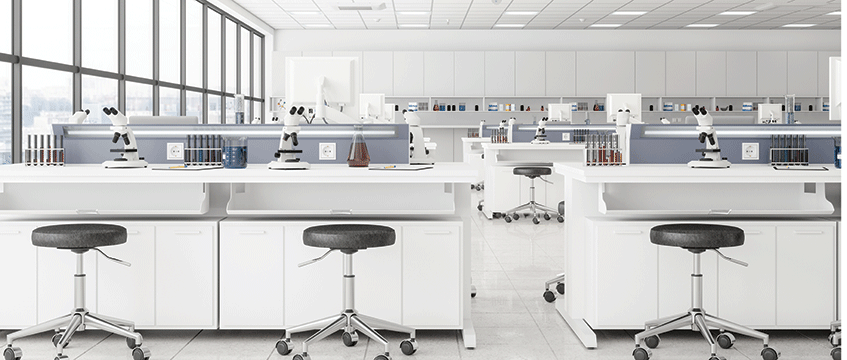Lab take-up slows across the Golden Triangle
Occupier activity across the Golden Triangle so far this year is lagging 2023 levels, according to DTRE.
Some 42,300 sq ft of laboratory space was transacted in Cambridge in the three months to the end of September, in line with 40,000 sq ft recorded in Q3 2023, the consultancy found. However, in the first nine months of this year, laboratory take-up in Cambridge was 94,800 sq ft, down from 113,850 sq ft last year.
Overall, laboratory-led demand in Cambridge has reached 899,500 sq ft, up from 783,000 sq ft at the end of June. The increase was mainly driven by larger requirements entering the market during the third quarter, reflecting Cambridge’s growing appeal to larger occupiers and solidifying its status as an established market.
Occupier activity across the Golden Triangle so far this year is lagging 2023 levels, according to DTRE.
Some 42,300 sq ft of laboratory space was transacted in Cambridge in the three months to the end of September, in line with 40,000 sq ft recorded in Q3 2023, the consultancy found. However, in the first nine months of this year, laboratory take-up in Cambridge was 94,800 sq ft, down from 113,850 sq ft last year.
Overall, laboratory-led demand in Cambridge has reached 899,500 sq ft, up from 783,000 sq ft at the end of June. The increase was mainly driven by larger requirements entering the market during the third quarter, reflecting Cambridge’s growing appeal to larger occupiers and solidifying its status as an established market.
Some 450,000 sq ft is classified as active demand, down slightly from 478,500 sq ft of active demand recorded as of 30 June, as companies continue to wait for funding.
Although Cambridge maintains the lowest vacancy rate across the Golden Triangle markets, as at the end of September, 211,200 sq ft of available up-and-built laboratory space was on the market, up from 151,000 sq ft at the end of the first half, due to the completion of developments such as One Granta at Granta Park.
Tough comparisons
Oxford has seen 103,100 sq ft of laboratory space transacted so far this year. Last year’s comparative figure was mostly driven by Moderna’s decision to locate its innovation and technology centre at Harwell. If this 145,000 sq ft deal, which comprised 65% of the 224,365 sq ft take-up for the whole of 2023, is excluded, then lab take-up figures for the first three quarters of 2024 already exceed the full year prior by 30%.
Demand for laboratory space in Oxford is 845,300 sq ft, with 503,600 sq ft classed as active demand. This has accelerated from the 451,200 sq ft of named demand and 332,000 sq ft of active demand recorded at the end of the first half of 2024.
Oxford has 255,000 sq ft of available lab space mostly located in out-of-town science parks, slightly lower than 282,000 sq ft recorded at the end of June.
Resurgent momentum
As at the end of September, laboratory take-up in London totalled 18,700 sq ft, with an additional 90,600 sq ft under offer. If these deals complete before year-end, London lab take-up will be more than double the 52,965 sq ft transacted over the whole of 2023.
Most of the deals in London so far this year were focused on fully fitted CL2 lab spaces of less than 5,000 sq ft, reflecting ongoing demand from early-stage companies and a developing ecosystem.
See also: Fully fitted labs set to bear fruit as asking rents skyrocket
DTRE said 75% of the total 785,600 sq ft lab demand is for space under 10,000 sq ft. However, there has been a rise in demand for larger spaces, with requirements for facilities over 10,000 sq ft re-emerging in the market, making up 17% of demand. Notably, Eli Lilly relaunched its search for a London base last month, more than a year after putting plans on hold.
Despite the robust demand, 266,700 sq ft of lab space remained available in London at the end of September, as long-awaited purpose-built labs continue to enter the market.
Photo by Getty Images/iStock











